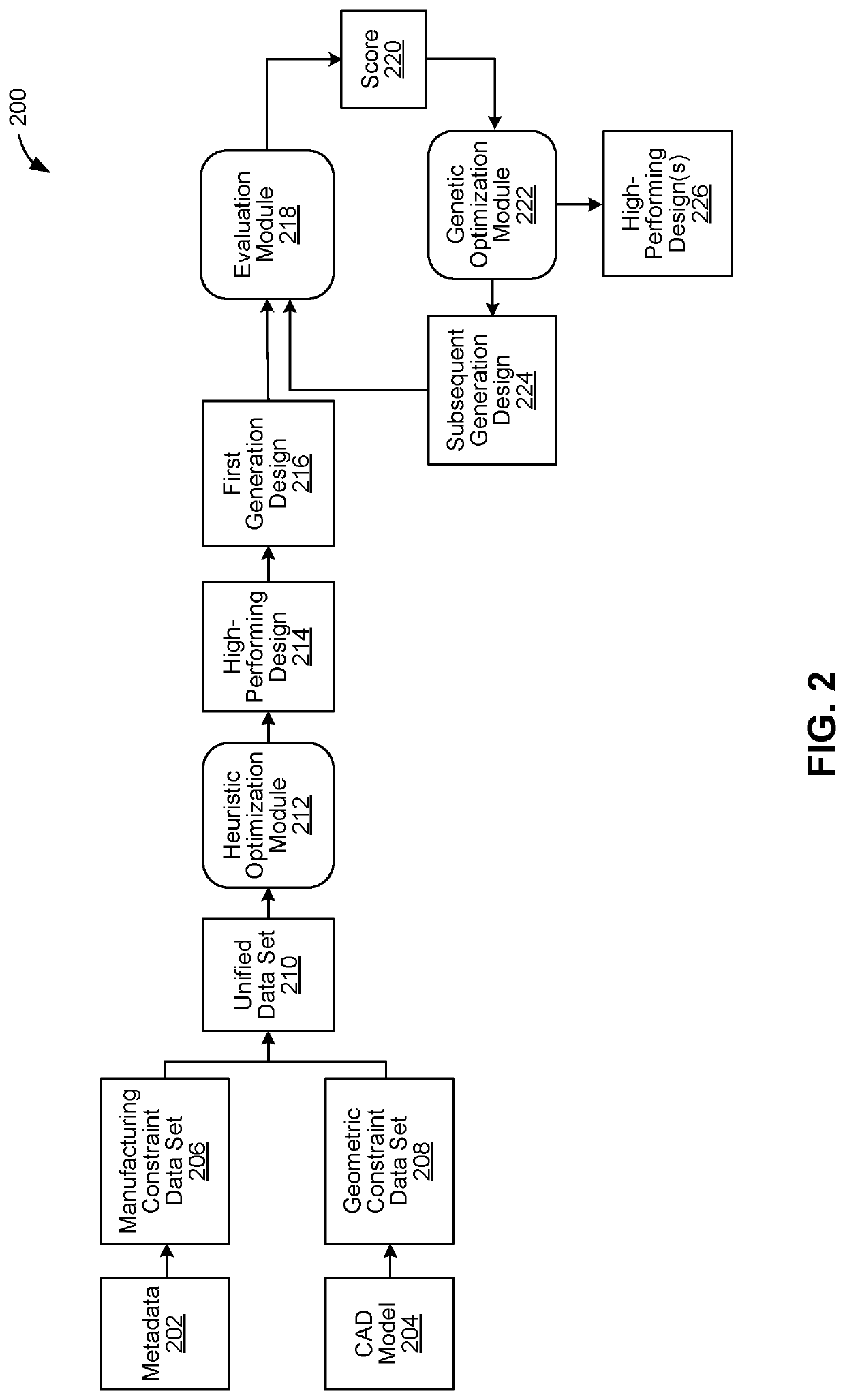Genetic optimization techniques for designing manufacturing facilities
a manufacturing facility and genetic optimization technology, applied in the field of computer science and computeraided design, can solve the problems of not incorporating functionality to automatically analyze different designs of manufacturing facilities, conventional cad software does not incorporate functionality to analyze a given design of manufacturing facilities, and the overall process of designing a manufacturing facility using conventional cad software and spreadsheets is typically quite tedious and time-consuming, so as to increase the likelihood of generating and identifying an optimized design for a complex manufacturing facility or other structur
- Summary
- Abstract
- Description
- Claims
- Application Information
AI Technical Summary
Benefits of technology
Problems solved by technology
Method used
Image
Examples
Embodiment Construction
[0023]In the following description, numerous specific details are set forth to provide a more thorough understanding of the present disclosure. However, it will be apparent to one of skilled in the art that the present disclosure may be practiced without one or more of these specific details.
System Overview
[0024]FIG. 1 is a conceptual illustration of a system 100 configured to implement one or more aspects of the various embodiments. In various implementations, system 100 may be an augmented reality, virtual reality, or mixed reality system or device, a personal computer, video game console, personal digital assistant, mobile phone, mobile device or any other device suitable for practicing one or more embodiments of the present invention.
[0025]As shown, system 100 includes a central processing unit (CPU) 102 and a system memory 104 communicating via a bus path that may include a memory bridge 105. The CPU 102 includes one or more processing cores, and, in operation, the CPU 102 is t...
PUM
 Login to View More
Login to View More Abstract
Description
Claims
Application Information
 Login to View More
Login to View More - R&D
- Intellectual Property
- Life Sciences
- Materials
- Tech Scout
- Unparalleled Data Quality
- Higher Quality Content
- 60% Fewer Hallucinations
Browse by: Latest US Patents, China's latest patents, Technical Efficacy Thesaurus, Application Domain, Technology Topic, Popular Technical Reports.
© 2025 PatSnap. All rights reserved.Legal|Privacy policy|Modern Slavery Act Transparency Statement|Sitemap|About US| Contact US: help@patsnap.com



